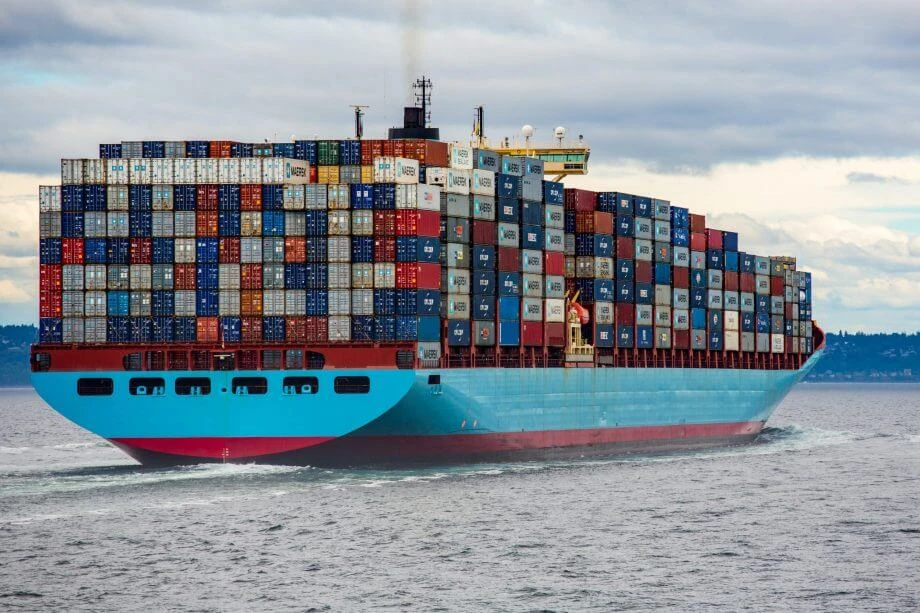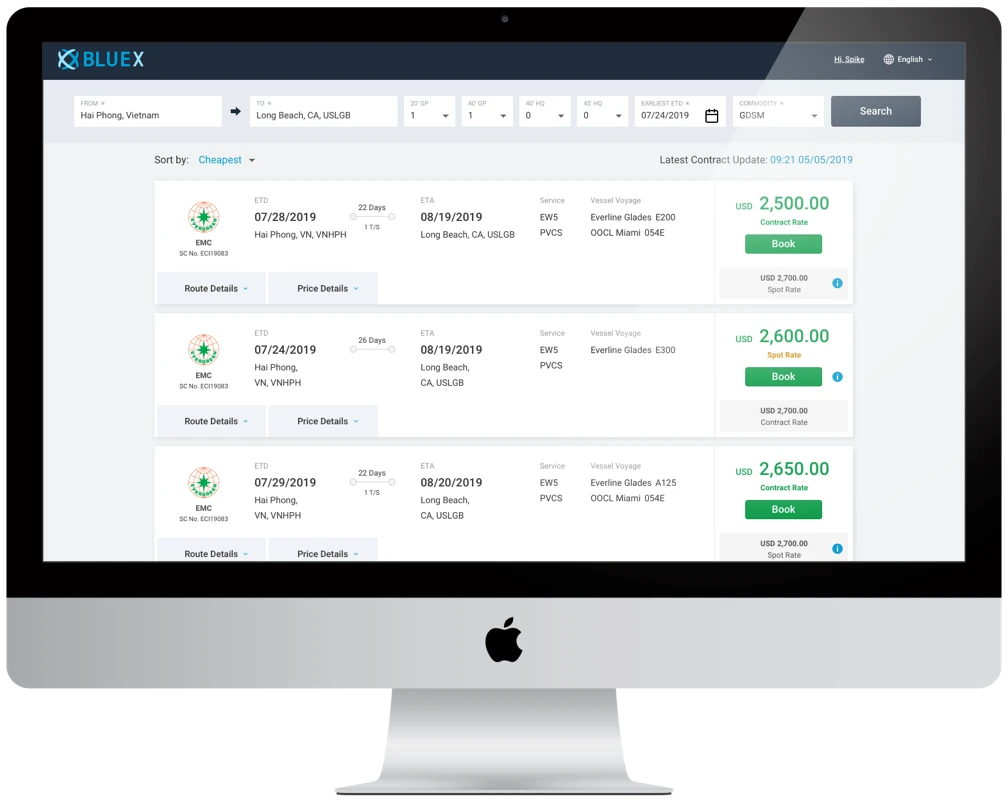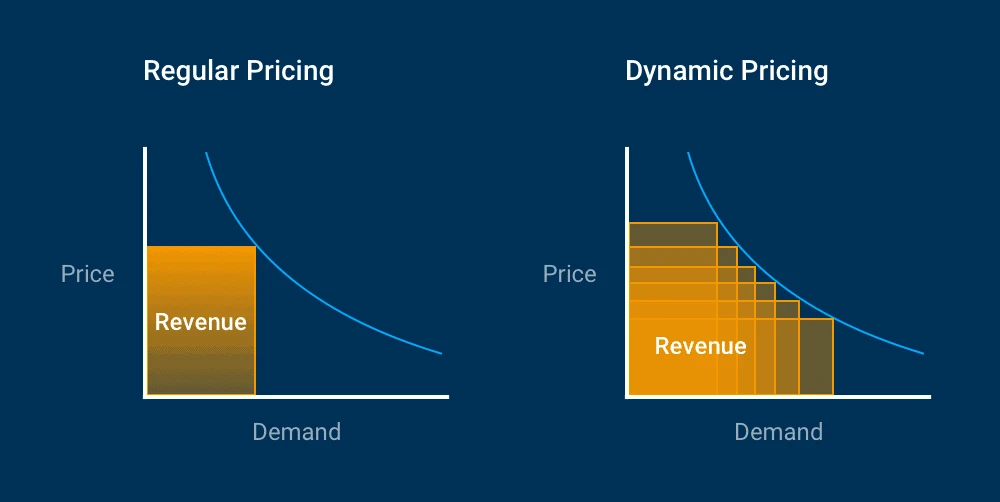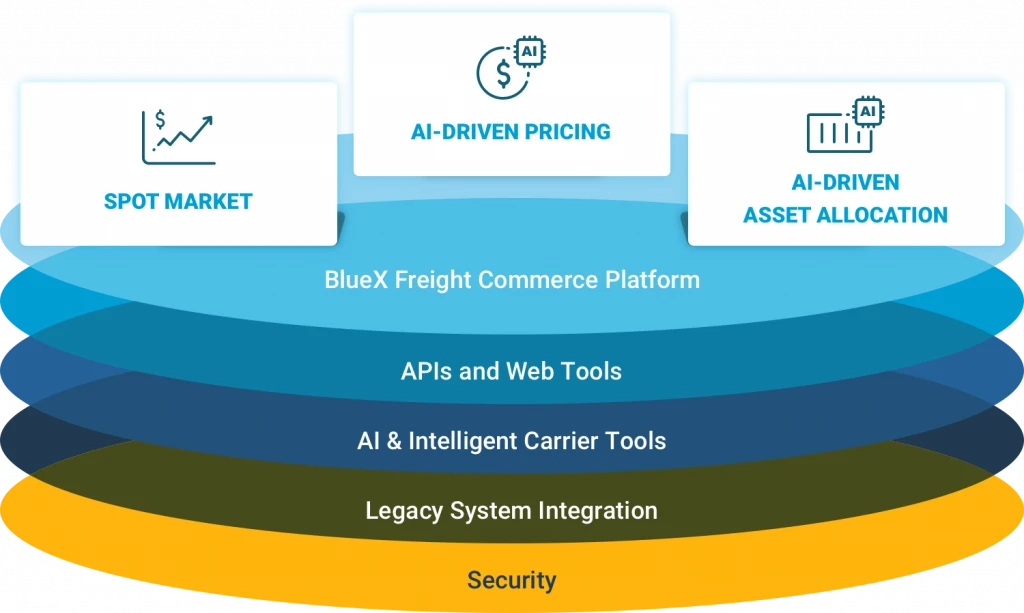
2020 was the year the world held its collective breath for an end to COVID-19. For those of us in ocean freight and logistics, we’ve seen the market dramatically drop and regain its footing.
2020 in many ways, was an unprecedented year that will continue to affect ocean freight and logistics well into the rest of the decade. Still, it also presents a myriad of challenges and opportunities.
With that in mind, here are seven of the top trends in ocean FreighTech we see affecting shippers, freight forwarders, third-parties, and ocean carriers.
If 2020 was the year that COVID-19 disrupted ocean freight and logistics, then 2021 is increasingly looking like more of the same.
The second half of 2020 led many ocean carriers to greater profitability as they limited supply and used the spot market to optimize revenues. Maersk exemplified this trend by announcing massive gains in Q3 and potentially Q4 of 2020, led by their online spot booking platform's continued growth.
It remains to be seen whether COVID-19 will continue to affect operations and trade far into 2021, but early 2021 looks to have similar volatility. While ocean carriers see gains, shippers face higher rates due to fewer shipments and container shortages as demand outstrips ocean carrier supply.
However, the variability in demand has only accelerated the digitalization in freight, boosting their profitability while also streamlining shippers’ and freight forwarders’ ocean freight experience for greater efficiency.

Digital transformation is sweeping through ocean freight. Since 2016, Maersk led the way in reshaping traditional ocean freight bookings. As of October, Maersk customers booked 53% of all short-term bookings on their online spot market, and other ocean carriers are joining this trend, such as:
- Hapag-Lloyd
- ZIM
- Evergreen Line (GreenX)
- Yang Ming Marine
- Many more
Ocean carriers are beginning to step up to the plate in 2020 digitally. This trend will only continue as more carriers continue to adopt solutions like the BlueX White-label E-commerce Solution.
However, digital booking platforms by themselves aren’t enough. Greater commitments to digitally streamlining operations is needed. That’s where AI comes in
While the airline industry has been utilizing AI (Artificial intelligence) for years, ocean carriers are still figuring out where this FreighTech belongs in their playbook. That’s changing in 2021.
AI in ocean shipping operations can bring about considerable benefits such as improved demand forecasting and price optimization. AI is essentially software that learns and makes decisions based on multiple data inputs.
For ocean carriers, AI tools are allowing them to optimize their operations for greater efficiency. With BlueX AI-driven Dynamic Pricing algorithms, ocean carriers can generate greater revenue by maximizing price points to match price and demand effectively. This is achieved by forecasting pricing via dozens of market, industry, and company-specific factors.

Overall, AI can help Ocean carriers to control revenue management, offer flexible pricing, and reduce errors with an automated system.
One big question asked by shippers is: how will I access pricing on my third-party TMS or rate management solution? That’s where APIs will emerge in 2021.
APIs (Application Programming Interface) are the middle-men between applications that weren’t coded or built to communicate with each other. Typically, this can occur between shipper and freight forwarder transport management systems and ocean carrier systems.
In the past, many players in ocean shipping have relied on EDI integration which is not real-time – which doesn’t really work when markets are dynamic...
Modern APIs change all of this. With the BlueX API, shippers and freight forwarders, small and large, can gain direct access to their real-time data from their ocean carriers that includes:
- Spot rate data
- Space data
- Schedule data
- Tracking data
Ocean carriers may not have the ability to offer APIs to all customers, and ocean freight E-commerce platforms like BlueX can facilitate these integrations with multiple ocean carriers on a neutral platform.
To learn more about the BlueX API, click here, and connect directly with your ocean for up-to-date data to streamline your ocean shipping experience.
Perhaps the most searched term on Google for shippers in 2020 was “tracking.” Transparency in shipping is key to shippers, and without door-to-door visibility in 2021, many ocean carriers may find themselves outstripped by competitors.
Smart container tracking insights also give ocean carriers the predictive insights they need to manage container allocation effectively.
Using online smart tracking with IoT (Internet of Things) devices, ocean carriers can better track containers and receive data to optimize fleet allocation and better match supply with shipper demand.
Other use cases include IoT devices with sensors that can send out real-time alerts to notify shippers when their goods are departing or arriving at a port. These features could enhance customer experiences and improve ocean carriers' operations, resulting in greater efficiencies and revenues in 2021.
This type of FreighTech enables carriers to reposition their containers and reduce container shortages that may continue to affect shippers and freight forwarders.
Since 2017, four out of the top 10 ocean carriers have experienced digital security breaches to their systems.
In 2017, Maersk experienced a loss of an estimated $300 million from their ransomware attack. CMA CGM experienced the latest attack in 2020 with its IT systems going down and affecting their E-commerce systems for almost two weeks.
While many carriers updated their systems with extra layers of security, the reality is that cyberattacks are ever-changing. In 2021, state of the art enterprise-class information security will be instrumental in preventing revenue losses by downed systems.
Outsourced solutions like BlueX provide an additional layer of security as they are separate from carriers' systems and have been built from the ground-up with the latest in enterprise-class information security.
All the above ensures your information is secure and enables faster disaster recoveries should your systems receive cyber attacks.
Ocean freight is steadily and digitally changing. 2021 will be the pivotal point where ocean carriers realize they need to embrace digital to remain competitive and optimize revenues.
Carriers build vs. buy choice faces three major risks – financial, technical, and market timing. For carriers that build in-house, they take on all risks with a high chance of failure. However, with an off the shelf solution, carriers significantly reduce risks, as solutions like BlueX have already been adopted by two of the largest carriers in the world.
While some ocean carriers may still choose to build their own systems, this may not be viable for most ocean carriers due to the costs and time needed to implement such platforms compared to the immediate need to deploy them.
BlueX has the White-label E-commerce Platform ocean carriers need to stay competitive.
Building a world-class digital platform that includes the first six trends above takes expertise, time, capital, and a world-class team. BlueX offers ocean carriers a scalable White-label E-commerce Solution to digitally transform operations and give customers the online platform they need.
With APIs, AI tools, FreighTech, information security, and legacy system integrations, BlueX has each component required to set up your digital solution, all powered through our Freight Commerce Platform.
